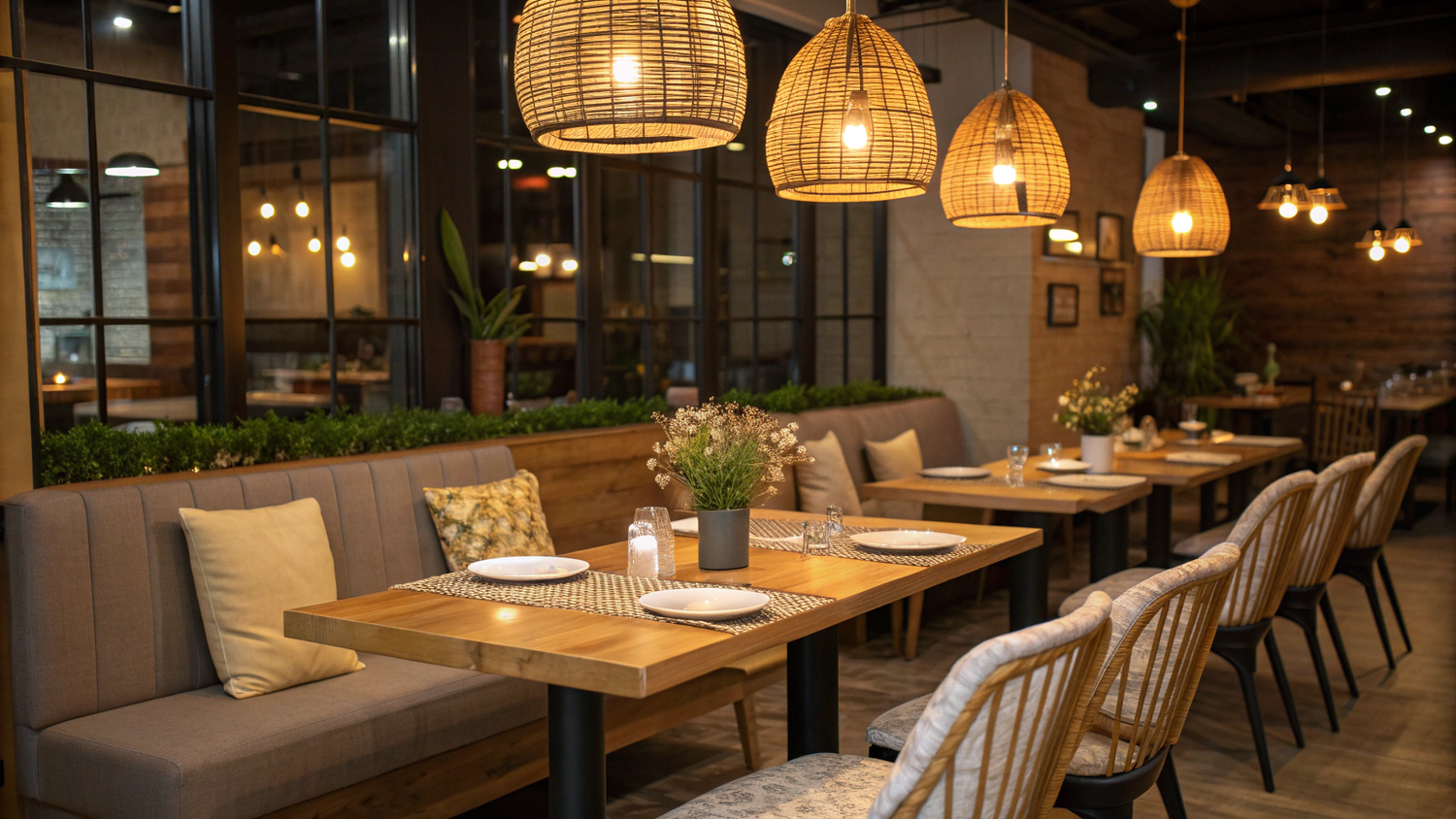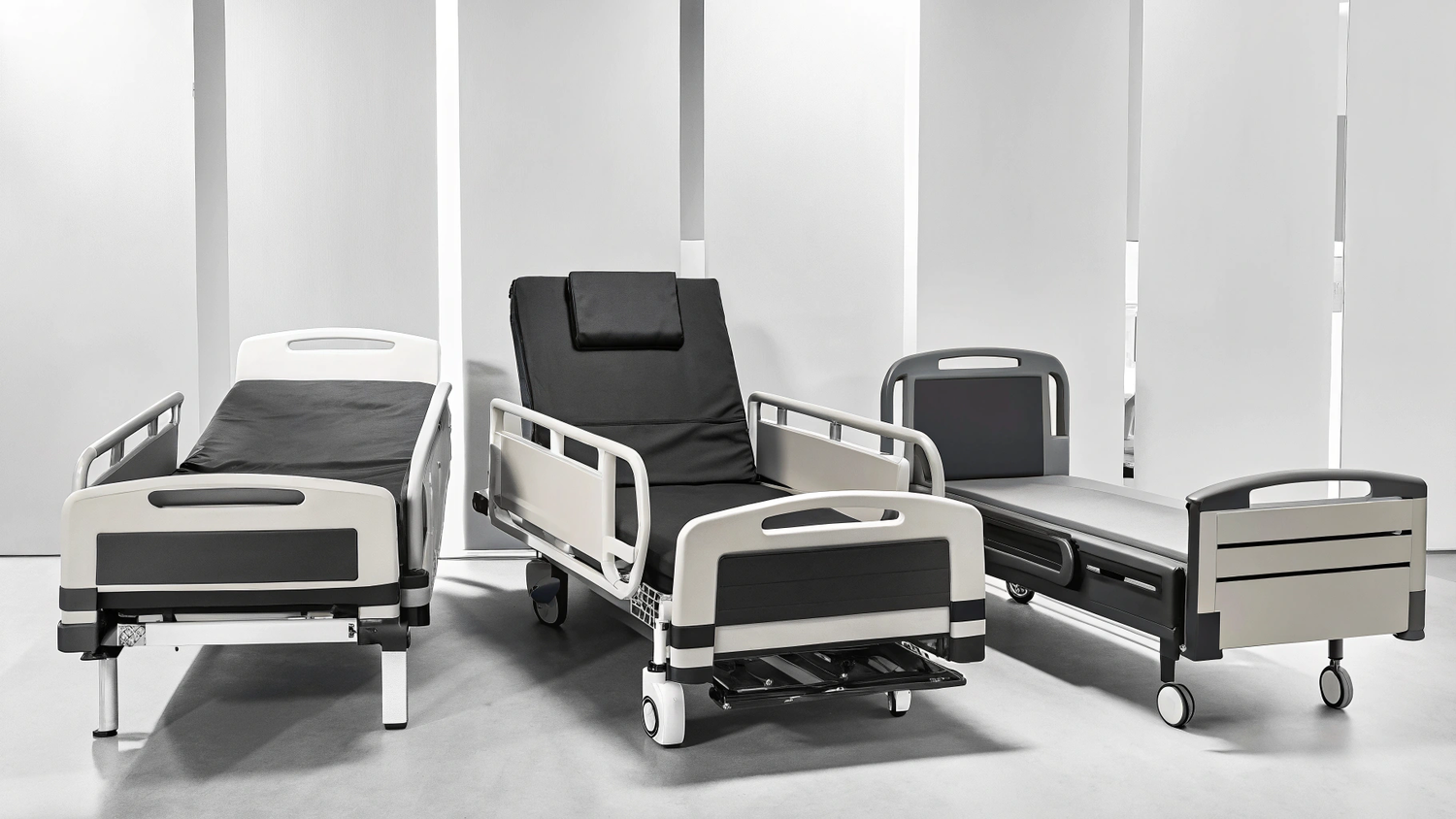Hospital interior design is a multifaceted task that requires balancing functionality, aesthetics, and comfort to create spaces that promote healing, operational efficiency, and positive experiences for patients, staff, and visitors.
When planning a hospital interior, a well-thought-out design not only enhances patient care but also supports the seamless functioning of medical facilities. Here are key considerations to keep in mind:
1. Patient Comfort and Well-being

Patients are at the heart of any hospital design. The environment should foster a sense of calm and comfort, reducing stress and aiding in recovery. Consider the following:
-
Color Palette: Use calming, neutral colors like soft blues, greens, and pastels. These colors evoke tranquility and can have a soothing effect on patients.
-
Comfortable Seating: Incorporate ergonomic and plush seating in waiting areas and patient rooms. Comfortable furniture can make long waiting hours more bearable for patients and their families.
-
Nature-Inspired Design: Biophilic design elements, such as indoor plants, nature-themed artwork, or views of greenery, can positively influence patient moods and recovery rates.
At Lakdi.com, we specialize in crafting patient-centric designs that blend comfort and style seamlessly, ensuring an optimal healing environment.
2. Hygiene and Cleanliness

Maintaining a sterile and hygienic environment is critical in healthcare settings. Interior design must prioritize materials and layouts that facilitate easy cleaning and prevent the spread of infections.
-
Antimicrobial Materials: Use surfaces like antimicrobial laminates, vinyl flooring, and stainless steel for high-touch areas.
-
Seamless Flooring: Opt for non-porous, seamless flooring solutions to minimize dirt accumulation and make cleaning effortless.
-
Washable Fabrics: For upholstery, select materials that are durable, stain-resistant, and easy to sanitize.
Lakdi.com offers a range of innovative, hygienic design solutions tailored for hospitals, ensuring compliance with healthcare safety standards.
3. Efficient Layout and Navigation

A hospital’s layout should prioritize efficiency for staff while being intuitive for patients and visitors. Poor navigation can lead to delays and frustration.
-
Wayfinding: Incorporate clear signage, color-coded zones, and digital navigation aids to help visitors find their way effortlessly.
-
Workflow Optimization: Design spaces to minimize the distance staff must travel between frequently used areas, such as nurse stations, patient rooms, and supply areas.
-
Open Spaces: Ensure that hallways and waiting areas are spacious enough to accommodate wheelchairs and stretchers without crowding.
With Lakdi.com’s expertise, we help create layouts that streamline hospital operations and enhance the overall experience for all users.
4. Lighting Design

Lighting plays a significant role in shaping the mood and functionality of a hospital. The right lighting not only enhances visibility but also contributes to a welcoming and warm atmosphere.
-
Natural Light: Maximize the use of large windows and skylights to bring in daylight. Natural light boosts morale and reduces energy consumption.
-
Task Lighting: Equip examination rooms, operating theatres, and nurses’ stations with bright, focused lighting.
-
Ambient Lighting: Install dimmable lighting options in patient rooms to promote relaxation and better sleep cycles.
Lakdi.com offers tailored lighting solutions, ensuring every area in your hospital is optimally lit for its purpose.
5. Integration of Technology

Modern hospitals require state-of-the-art technology to improve patient care and operational efficiency. The design should accommodate and seamlessly integrate these technological advancements.
-
Medical Equipment: Ensure that spaces like operating rooms, ICUs, and diagnostic labs are equipped to support advanced medical machinery.
-
Smart Systems: Incorporate smart controls for lighting, temperature, and security to enhance efficiency.
-
Patient Connectivity: Provide charging points, Wi-Fi, and entertainment systems in patient rooms to keep them connected and engaged.
Lakdi.com’s designs account for the latest technological needs, creating adaptable spaces for present and future advancements.
6. Safety and Accessibility

Safety and accessibility are non-negotiable aspects of hospital interior design. Spaces should adhere to regulations and cater to diverse needs.
-
Slip-Resistant Surfaces: Use flooring materials with anti-slip properties in high-traffic and wet areas.
-
Fire Safety: Include fire-resistant materials and ensure compliance with fire safety codes.
-
Universal Accessibility: Design entrances, corridors, elevators, and restrooms to be accessible to individuals with disabilities.
Lakdi.com prioritizes safety and inclusivity, delivering hospital interiors that are secure and universally usable.
7. Aesthetic Appeal

While functionality is critical, aesthetics should not be overlooked. An aesthetically pleasing hospital can leave a lasting positive impression on patients and visitors.
-
Artwork and Decor: Display uplifting art and decor that reflects the hospital’s ethos.
-
Ceiling Design: For areas where patients spend long periods lying down, such as ICUs, incorporate visually stimulating ceiling designs.
-
Custom Branding: Infuse the hospital’s branding into the interior design through color schemes, logos, and signage.
With Lakdi.com, you can achieve a harmonious blend of aesthetics and practicality in your hospital design.
8. Sustainability

Sustainability is a growing priority in healthcare design. Hospitals can benefit from eco-friendly practices that reduce environmental impact and operational costs.
-
Energy-Efficient Systems: Use LED lighting, energy-efficient HVAC systems, and solar panels.
-
Sustainable Materials: Opt for materials that are recyclable, biodegradable, or made from renewable resources.
-
Waste Management: Design spaces to support effective waste segregation and disposal.
Lakdi.com integrates sustainable solutions into hospital designs, helping you create environmentally responsible healthcare spaces.
Why Choose Lakdi.com for Hospital Interior Design?
At Lakdi.com, we understand the unique challenges and demands of designing healthcare spaces. Our expertise in hospital interior design allows us to deliver solutions that prioritize patient care, operational efficiency, and aesthetic appeal. Here’s why you should partner with us:
-
Customized Solutions: We tailor every design to meet your specific requirements, ensuring functionality and style.
-
Expert Team: Our team of experienced designers specializes in creating efficient and welcoming healthcare environments.
-
End-to-End Services: From conceptualization to execution, we provide comprehensive interior design services.
-
Quality Assurance: We use high-quality, durable materials that meet healthcare standards and regulations.
Whether you’re building a new hospital or renovating an existing one, Lakdi.com is your trusted partner for hospital interior design. Let us help you create spaces that foster healing, comfort, and efficiency.
[Note: All images featured in this blog are generated using AI technology.]
Related Articles You May Enjoy:
- Top 10 Ideas for Café Interiors
- Guide for Coffee Shop Interior
- 7 Things to Consider When Designing Restaurant Interiors
- 5 Common Mistakes to Avoid While Buying Restaurant Furniture
- Essential Cafe Design Tips That You Must Include In Your Cafe In 2022
- Guide for Restaurant Furniture, Banquette & Booth Seating
- How to Choose Best Furniture for Home?
- Importance of Good School Furniture and Equipment
- How New Furniture Brands Are Bringing the Fast-Fashion Ethos into the Home
- The Power of Custom Office Furniture: How to Use It to Reflect Your Brand Personality





